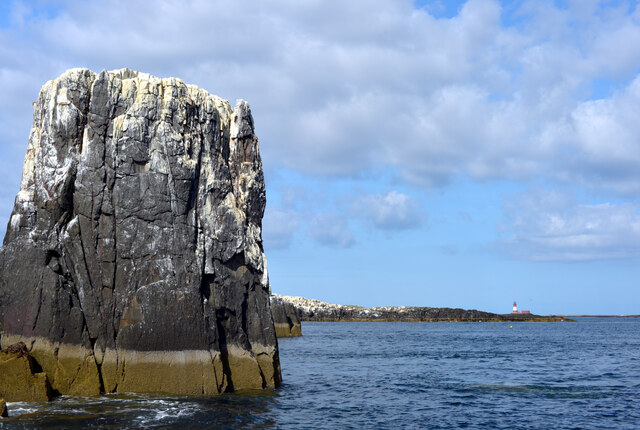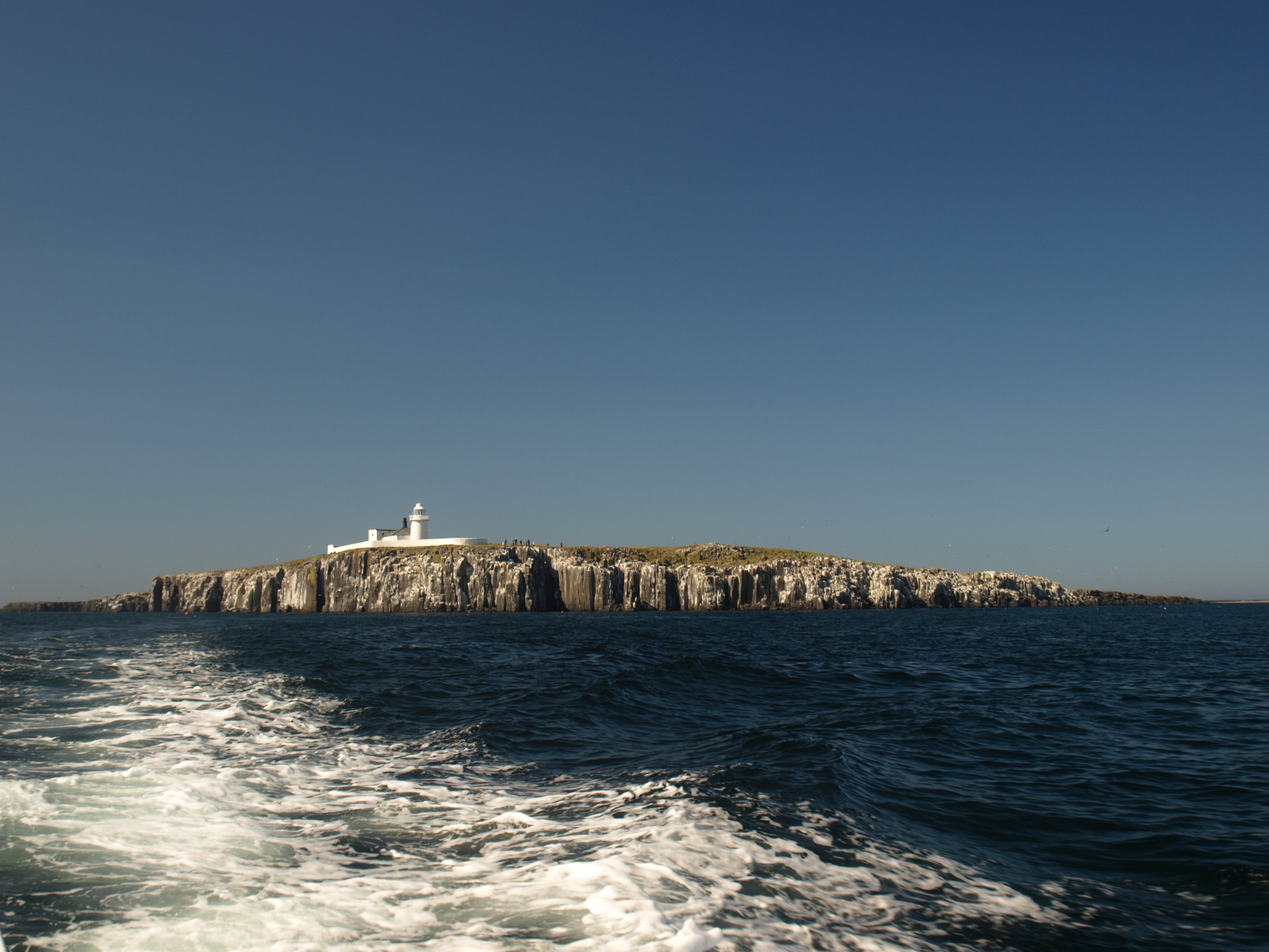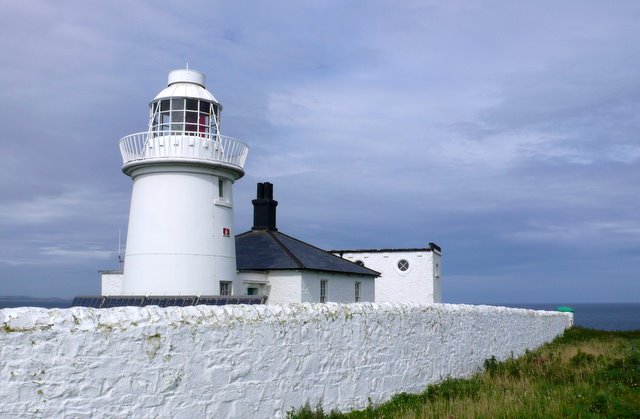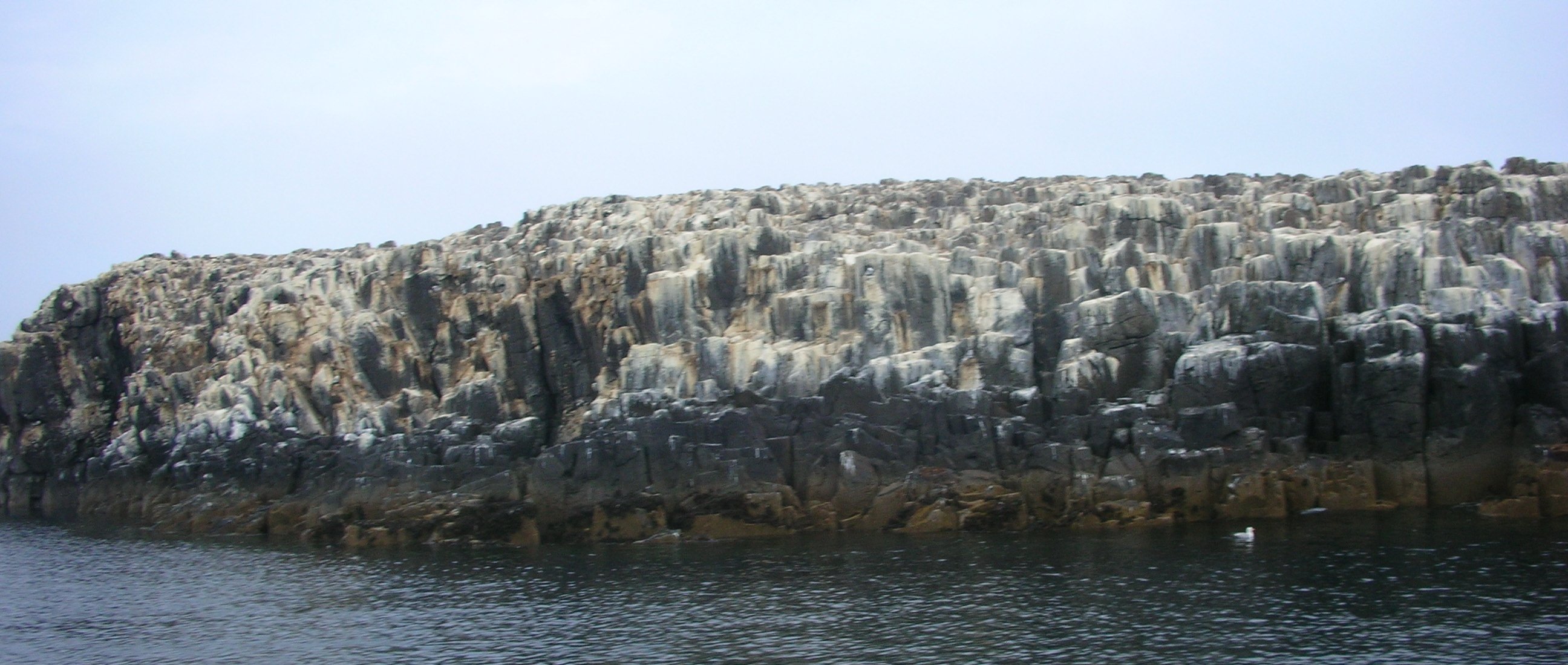Big Scarcar
Island in Northumberland
England
Big Scarcar

Big Scarcar is a small uninhabited island located off the coast of Northumberland, England. Situated in the North Sea, it is part of the Farne Islands group, which is known for its rich wildlife and historical significance. The island covers an area of approximately 4.5 acres and boasts a rugged terrain with steep cliffs and rocky outcrops.
The name "Scarcar" is derived from the Old Norse word "sker," meaning a small rocky island. It is believed to have been used as a Viking outpost during the medieval period, evident from the presence of a defensive structure on the island's highest point. Today, remnants of this structure can still be seen, offering visitors a glimpse into the island's historical past.
Big Scarcar is a sanctuary for various seabird species, including puffins, guillemots, and razorbills, which nest on its cliffs during the breeding season. The island also serves as a vital breeding ground for grey seals, which come ashore to give birth to their pups during the autumn months.
Access to Big Scarcar is strictly controlled to protect its fragile ecosystem, and visitors are required to obtain special permits and follow conservation guidelines. The island can be reached by boat from nearby Seahouses, which offers regular tours to the Farne Islands. These tours provide visitors with the opportunity to observe the diverse wildlife and learn about the island's fascinating history.
Overall, Big Scarcar is a captivating island that combines natural beauty, historical significance, and abundant wildlife, making it a must-visit destination for nature enthusiasts and history buffs alike.
If you have any feedback on the listing, please let us know in the comments section below.
Big Scarcar Images
Images are sourced within 2km of 55.617152/-1.6395999 or Grid Reference NU2236. Thanks to Geograph Open Source API. All images are credited.


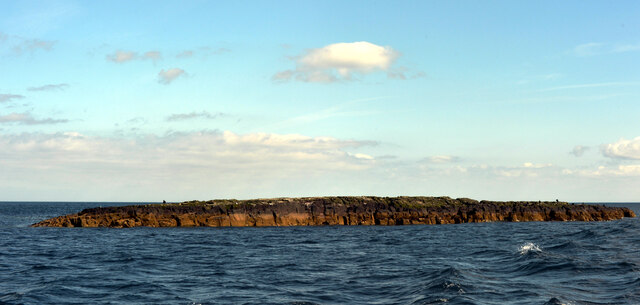




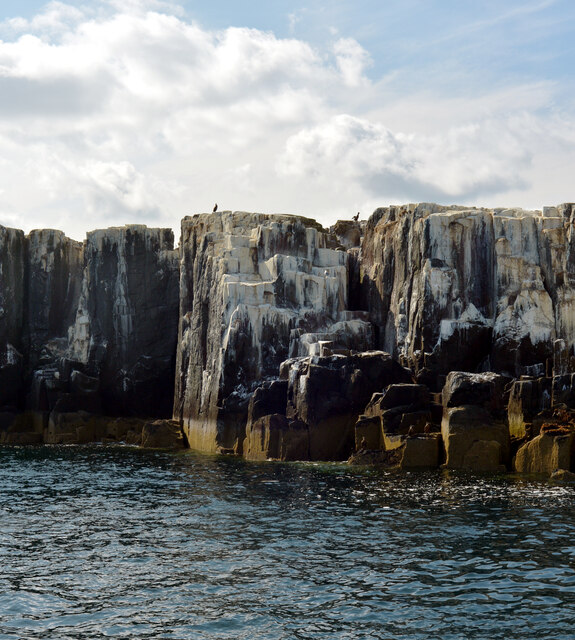
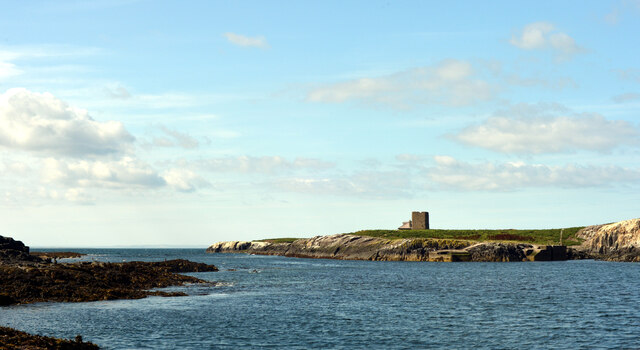


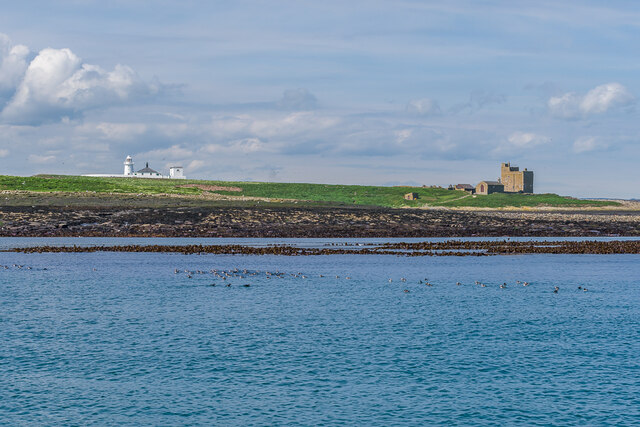

Big Scarcar is located at Grid Ref: NU2236 (Lat: 55.617152, Lng: -1.6395999)
Unitary Authority: Northumberland
Police Authority: Northumbria
What 3 Words
///weep.spill.bibs. Near Seahouses, Northumberland
Nearby Locations
Related Wikis
Farne Islands
The Farne Islands are a group of islands off the coast of Northumberland, England. The group has between 15 and 20 islands depending on the level of the...
Farne Lighthouse
Farne Lighthouse is a lighthouse on the southern tip of Inner Farne (one of a group of islands off the coast of North Northumberland). Built in the early...
Staple Island
Staple Island is a small rocky island, or skerry, that is one of the Outer Group of the Farne Islands in Northumberland, England. The Farne Islands are...
Forfarshire (ship)
Forfarshire was a paddle steamer with brigantine rigging, built in Dundee in 1834, and which struck and later foundered on one of the Farne Islands on...
Nearby Amenities
Located within 500m of 55.617152,-1.6395999Have you been to Big Scarcar?
Leave your review of Big Scarcar below (or comments, questions and feedback).
